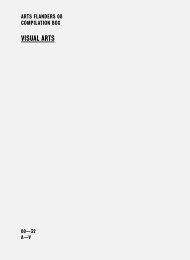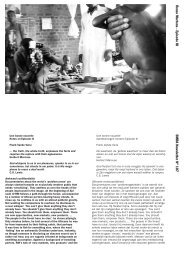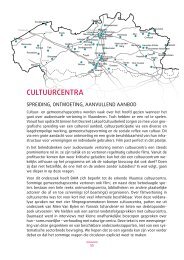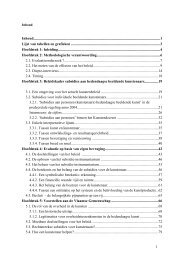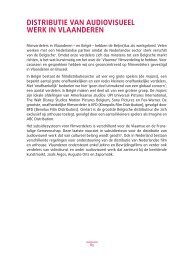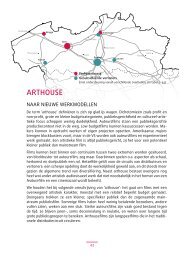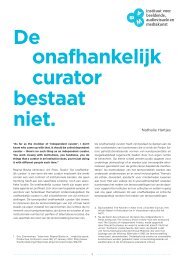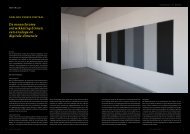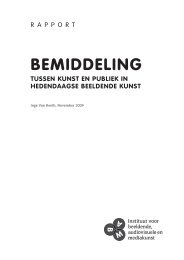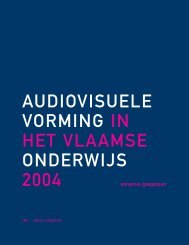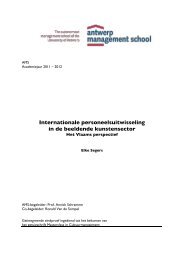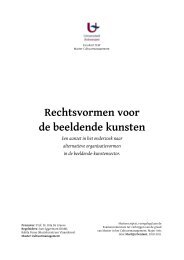MEDIA DIGITAL ART AND CULTURE IN FLANDERS BELGIUM - BAM
MEDIA DIGITAL ART AND CULTURE IN FLANDERS BELGIUM - BAM
MEDIA DIGITAL ART AND CULTURE IN FLANDERS BELGIUM - BAM
Create successful ePaper yourself
Turn your PDF publications into a flip-book with our unique Google optimized e-Paper software.
or experiences outside the familiar are personalised, made familiar. Or, the<br />
other way around, something familiar is put in a new context where it triggers<br />
the attention of a new group of people. Appropriation is a playful activity. Via<br />
various playful ways of working together, people investigate the structures of<br />
media environments, products and experiences and look for opportunities to<br />
personalise them (Zimmerman in Wardrip-Fruin & Harrigan, p. 159 ). People<br />
turn media into a lived and experienced place, full of personal memories,<br />
traces, security and emotions (Tuan, 1977). These appropriating activities often<br />
take place in what Garcia would call Art and Science Labs. Here media artists<br />
appropriate technology developed in a scientific environment or scientists<br />
appropriate the low tech (or sometimes high tech) designs, prototypes and<br />
technologies developed by artists for scientific reasons.<br />
In Belgium only a few labs come close to the definition of an Art and<br />
Science Lab. Luc Steels has been leading a quite interesting lab since 1983,<br />
namely The Artificial Intelligence Laboratory at the VUB (VUB AI-Lab). This lab<br />
develops artificial systems that research aspects of intelligence, like knowledge<br />
systems, autonomous robots, machine learning systems, natural language<br />
processing components, design and implementation tools. A well-known lab,<br />
mostly driven by the artist Godfried-Willem Raes, is the Logos Foundation.<br />
Funded by the cultural government, this lab is a well equipped laboratory for<br />
the design and the construction of music related electronic hardware, digital<br />
and analogue. They create new and original instruments as well as hardware<br />
user interfaces and equipment for interactive music applications. At EDM<br />
(Expertise Centre Digital Media) Philippe Bekaert works together with Crew, a<br />
media art collective creating immersive theatre, and the University of Antwerp.<br />
Together they develop new tools and environments that play with immersivity<br />
and mixed realities.<br />
Some artists turn science labs temporarily in Art and Science Labs.<br />
Workspace Unlimited – Thomas Soetens and Kora Van den Bulcke – temporarily<br />
makes its place into scientific environments, serving as a kind of mobile<br />
laboratory. Workspace Unlimited collaborated with EDM and other labs abroad<br />
such as the Society for Art and Technology in Montreal for the creation of<br />
immersive Virtual Reality environments. An artist who willingly works together<br />
with scientific institutes, is Frederik De Wilde. Together with the University<br />
of Hasselt for instance, he developed ways to translate the communication<br />
patterns of electric sensorial fish species in a sound installation (EOD02 &<br />
EOD04). For his Open Structures project, which hacks the infrastructures of our<br />
society and searches for new ways to connect, Thomas Lomée’s collaborated<br />
2 6



